In an increasingly globalized world, it’s still sometimes shocking to see just how disparate our lives are compared with other human beings around the world. A book of photographs by Peter Menzel called "Hungry Planet: What the World Eats" ("©Peter Menzel www.menzelphoto.com. Ten Speed Press, published in 2005) makes a relevant point with great irony: at a time when hundreds of millions of people don't have enough to eat, hundreds of millions more are eating too much and are overweight or obese. In observing what six billion eat for dinner the authors note,
"Today, more people are overweight than underweight."
It is these cultural differences, emphasized and reinforced by the author, which exemplifies the lifestyles and dietary habits of people around the world. In the United States, processed foods are par for course. In the Philippines, fresh fruit and vegetables play a far more significant role. In the harsh Chad sun, a family of six exists on a measly $1.23 per week.
........
You may have seen some of these photographs from the book as it been widely circulating on the net, if not, I urge you to purchase it and as one of my friends said via email: "I don't know about you, but I'm counting my blessings." Traveling to 24 countries, from Greenland, Chad, and Japan to Germany, Guatemala, and the United States, Peter Menzel and Faith D'Aluisio photographed 30 families accompanied by a careful display of a week's worth of food. Chronicling the enormous differences in eating habits between industrial and developing countries, each section includes a family portrait, along with their groceries, and a listing of how much was spent in each food group. In the tradition of MATERIAL WORLD, this timely, fascinating photography book illustrates not only the growth of fast food consumption worldwide, but also the transformation of diets across the planet. One notes that except where poverty is the most extreme, packaged cookies and candies have gripped the world as have soft drinks, primarily coca-colas. I found it both encouraging that there is so much local food culture left in the world, and deeply depressing that our processed food culture has spread so far and wide. If you look closely at the types of food being purchased you can see the difference between "eating to live" and "living to eat."
Meet the The Manzo family of Sicily. Their weekly expenditure is 214.36 Euros or $260.11. Note the copious amount of bread.
Germany: The Melander family of Bargteheide
Food expenditure for one week: 375.39 Euros or $500.07.
United States: The Revis family of North Carolina (I hope most American families eat more fresh fruits and vegetables and less junk food than this family.)Food expenditure for one week $341.98
Mexico: The Casales family of Cuernavaca
Food expenditure for one week: 1,862.78 Mexican Pesos or $189.09. Note the profusion of fruits & vegetables.
Poland: The Sobczynscy family of Konstancin-Jeziorna
Food expenditure for one week: 582.48 Zlotys or $151.27
Egypt: The Ahmed family of Cairo
Food expenditure for one week: 387.85 Egyptian Pounds or $68.53
Ecuador: The Ayme family of Tingo
Food expenditure for one week: $31.55
Bhutan: The Namgay family of Shingkhey Village
Food expenditure for one week: 224.93 ngultrum or $5.03. This feeds a family of 11! Remarkable.
Chad: The Aboubakar family of Breidjing Camp
Food expenditure for one week: 685 CFA Francs or $1.23. No comment.
Kuwait: The Al Haggan family of Kuwait City
Food expenditure for one week: 63.63 dinar or $221.45. Most foodstuffs in this State is subsidized.
Mongolia: The Batsuuri family of Ulaanbaatar
Food expenditure for one week: 41,985.85 togrogs or $40.06
China: The Dong family of Beijing
Food expenditure for one week: 1,233.76 Yuan or $175
Japan: The Ukita family of Kodaira City
Food expenditure for one week: 37,699 Yen or $317.25
source

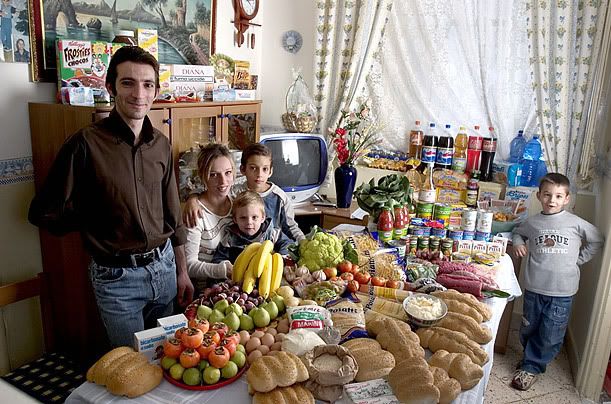
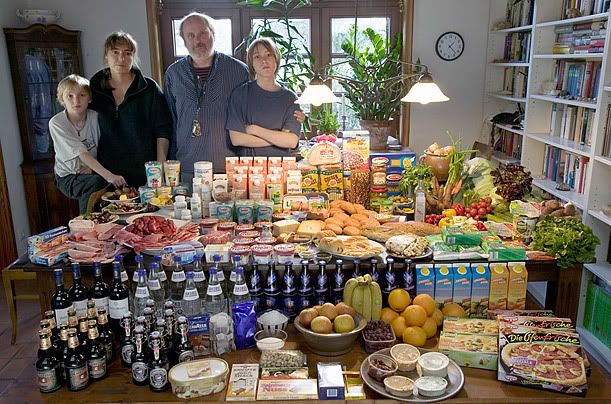


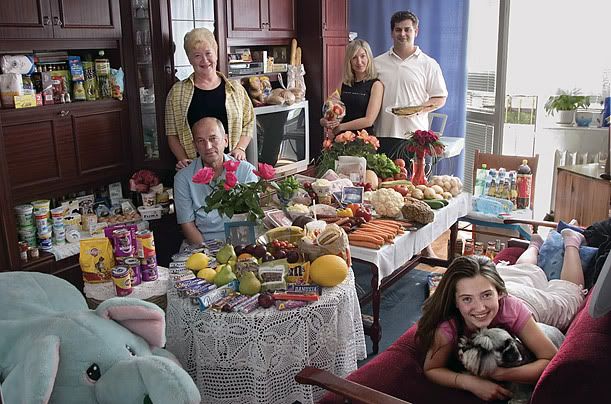
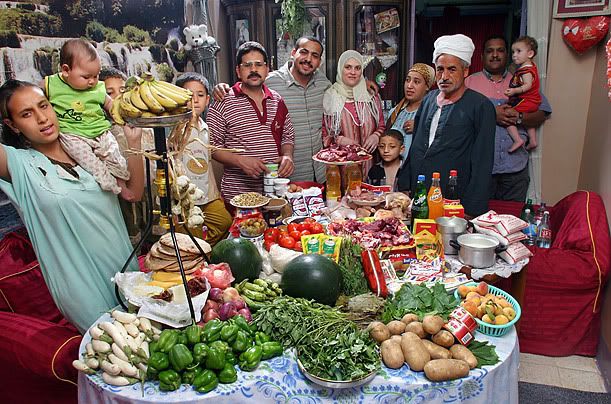
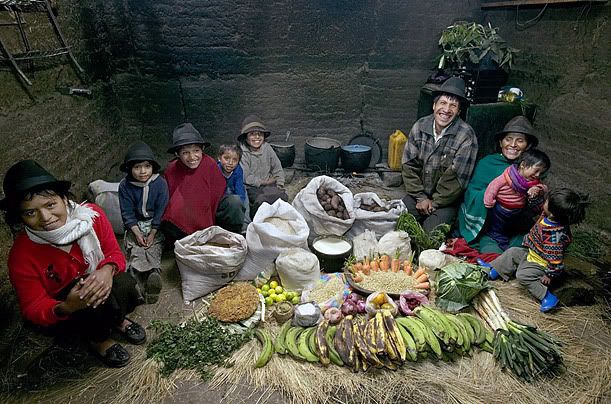

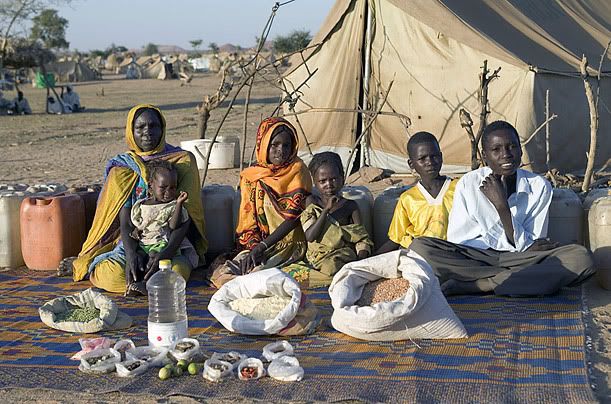




1.23$ a week !!
ReplyDelete